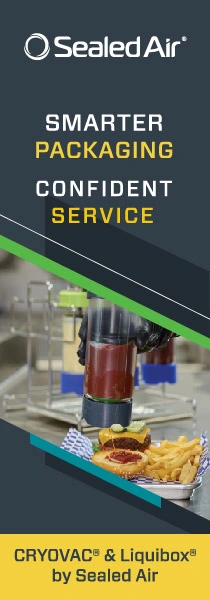Bayer and Liveo Research create PET blister pack for carbon and waste savings
Bayer has launched PET blister packaging in the Netherlands for its pain relief brand, Aleve. Developed in collaboration with pharma packaging manufacturer Liveo Research, the new solution shifts from traditional PVC materials and cuts the carbon footprint of Bayer’s blister packaging by 38%.
The solution addresses the longstanding sustainability issues related to conventional blister packs, which are multilayer compositions of plastic and aluminum, and therefore difficult to sort and recycle.
Bayer’s new PET blister offers improved recyclability, reducing packaging weight by 18% per unit and cutting per-unit water and land usage by 78% and 53%, respectively.
Chris Padain, vice president and global head of design for packaging, product experience and sustainability at Bayer’s consumer health division, tells Packaging Insights: “We wanted to deliver a more sustainable blister pack and maintain the consumer experience. We explored a variety of partners and material technology approaches, ultimately settling on Liveo’s PET film technology.”
“The primary drivers for selecting PET included its consumer familiarity and value from a recyclability point of view, and its ability to run on existing PVC production lines.”
Challenges in transition
According to Bayer, one of the main challenges was adapting to the new monomaterial and meeting healthcare industry regulations.
“Ensuring compliance with quality and safety standards took some time, especially as a first-mover. Hopefully, with this step, the path becomes easier for others, and we start to see a bigger impact beyond just one product launch,” says Padain.
According to Padain, pushing tablets through a plastic film sets a high standard in R&D and consumer testing.
 Bayer’s effort supports its goal of achieving Net Zero by 2050.“The most critical challenge was achieving the right consumer experience when using the product. Everyone is familiar with foil-backed blister packs and they are very easy to use. Our desired benchmark was parity from an experience point of view, as consumer accessibility is critical for us to meet the health needs of our users.”
Bayer’s effort supports its goal of achieving Net Zero by 2050.“The most critical challenge was achieving the right consumer experience when using the product. Everyone is familiar with foil-backed blister packs and they are very easy to use. Our desired benchmark was parity from an experience point of view, as consumer accessibility is critical for us to meet the health needs of our users.”
Demand-driven innovation
While consumer expectations for sustainable packaging differ by region and product type, demand for eco-friendly options is growing steadily each year. In a previous interview with us, Padain told us that environmental sustainability has been one of the key drivers of consumer demand.
“We’re really proud to be the first to bring this PET packaging solution to market for the Consumer Health industry. This innovation represents a strong step forward in helping us achieve our sustainability targets and our ambition to transition all of our blister packaging to more sustainable solutions,” he says.
“With the reduced carbon emissions, our new PET packaging not only diminishes our environmental impact but also aligns with our commitment as a signatory of the Science Based Targets initiative to take meaningful action against climate change.”
Dr. Carsten Heldmann, CEO of Liveo Research, adds: “With the introduction of our PET One-Material Blister into Bayer’s Aleve product range, we’ve proven that more sustainable blister packaging is possible on a large, global scale. Waste and CO2 can already be saved today.”
Collaboration in healthcare industry
Bayer acknowledges that further changes in the recycling sector are necessary to integrate this PET solution into the circular economy.
“Launching this solution in the Netherlands is just the beginning for us — we plan to scale this technology throughout our portfolio wherever applicable. Replacing all PVC blisters is one of our biggest sustainability challenges, and while this requires further R&D to ensure equivalent performance across different product types, this work is already well underway,” Padain highlights.
To foster this transition, Bayer is also collaborating with organizations such as the Global Self-Care Federation, Blister Pack Collective and The Recycling Partnership.
“We hope that other manufacturers will adopt this technology when it makes sense, as no single company can make the impact we need to see on its own. Together, we can drive systemic change in the healthcare industry, paving the way for a more sustainable future,” Padain concludes.










